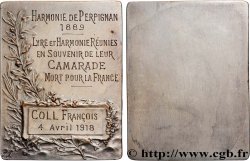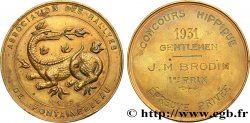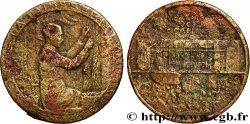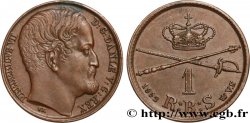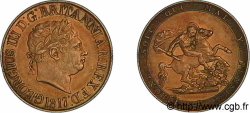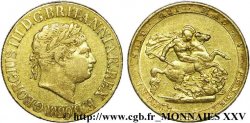fme_696235 - III REPUBLIC Médaille, Major Martin, École de la Martinière
Not available.
Item sold on our e-shop (2022)
Price : 70.00 €
Item sold on our e-shop (2022)
Price : 70.00 €
Type : Médaille, Major Martin, École de la Martinière
Date: 1838
Mint name / Town : 69 - Lyon
Metal : copper
Diameter : 55 mm
Orientation dies : 12 h.
Engraver DANTZELL Joseph (1805-1877)
Weight : 67,58 g.
Edge : lisse
Puncheon : sans poinçon
Coments on the condition:
Jolie patine marron présentant quelques taches. Présence de quelques coups et rayures. Papier collé au revers
Obverse
Obverse legend : CLAUDE MARTIN FONDATEUR / LABORE ET CONSTANTINI.
Obverse description : Tête de profil tourné vers la droite, signé : DANTZELL FILS.
Reverse
Reverse legend : ÉCOLE DES SCIENCES ET ARTS INDUSTRIELS DE LYON / LA MARTINIERE // CHIMIE / 2E SECTION / -1RE MENTION- / LAPREVOTE / (CLAUDE) / 1838.
Reverse description : Légende en deux lignes circulaires et en 6 lignes horizontales entre des branches de chêne.
Commentary
Exemplaire décerné à Claude Laprevote.
Claude Martin, né à Lyon (France) le 4 janvier 1735 et mort à Lucknow (Inde) le 13 septembre 1800 est un soldat français de la Compagnie française des Indes orientales, puis de la Compagnie anglaise des Indes orientales (CAIO). Il amasse une grande fortune qu'il consacra à la création, après sa mort, de trois écoles à Calcutta, Lucknow et Lyon, toutes trois appelées “a Martinière”.
La Martinière fut un bref instant dans le palais Saint-Pierre (musée de peinture de Lyon) puis en 1832-1833 transférée dans l'ancien cloître des Augustins vers les Terreaux. Aujourd'hui il existe aussi La Martinière-Duchère, La Martinière-Monplaisir.
Le Major Martin légua aussi des sommes pour construire la Martinière-Lucknow (Inde) et un autre établissement à Calcutta. Mais les deux institutions "historiques" furent celles de Lyon (Augustins) et Lucknow avec la même devise : Labore et Constantia. .
Claude Martin, né à Lyon (France) le 4 janvier 1735 et mort à Lucknow (Inde) le 13 septembre 1800 est un soldat français de la Compagnie française des Indes orientales, puis de la Compagnie anglaise des Indes orientales (CAIO). Il amasse une grande fortune qu'il consacra à la création, après sa mort, de trois écoles à Calcutta, Lucknow et Lyon, toutes trois appelées “a Martinière”.
La Martinière fut un bref instant dans le palais Saint-Pierre (musée de peinture de Lyon) puis en 1832-1833 transférée dans l'ancien cloître des Augustins vers les Terreaux. Aujourd'hui il existe aussi La Martinière-Duchère, La Martinière-Monplaisir.
Le Major Martin légua aussi des sommes pour construire la Martinière-Lucknow (Inde) et un autre établissement à Calcutta. Mais les deux institutions "historiques" furent celles de Lyon (Augustins) et Lucknow avec la même devise : Labore et Constantia. .








 Report a mistake
Report a mistake Print the page
Print the page Share my selection
Share my selection Ask a question
Ask a question Consign / sell
Consign / sell
 Full data
Full data
